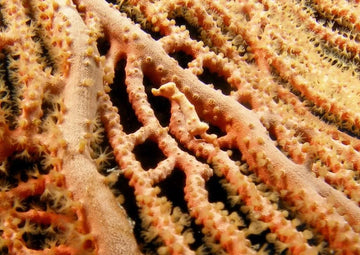Tulamben has become the most popular diving area of Bali, a must-visit destination for renowned underwater photographers and the most demanding diving media, who come to this northeastern point of the island to experience some of the best and most diverse diving in Asia.
Oh, before we proceed, if you want to give an unforgettable gift to a dive buddy (or even for yourself :-), remember we have a collection of t-shirts and sweatshirts for divers, super original, high quality, and with worldwide shipping.
Tulamben's bay boasts the highest diversity in all of Bali due to its waters rich in nutrients brought by currents from both the Pacific and the Indian Ocean. Black volcanic rocks leading to shallow waters teeming with plankton and inhabited by countless corals and gorgonians that hide the most photogenic characters of our oceans: sweetlips, Rhinecanthus aculeatus, pipefish, frogfish, harlequin shrimp, Napoleon wrasse, various species of moray eels, and a wealth of invertebrates...
Tulamben's underwater treasures
Check the best liveaboard deals in Indonesia
____________________________________
But Tulamben is not only home to small, colorful creatures; we can also encounter huge mola molas, manta rays, whale sharks, turtles, or impressive schools of tuna and barracudas, to name a few examples of the pelagic fauna that visits Tulamben throughout the year.
Tulamben is especially known for the wreck "Liberty", 120 meters in length that hosts over 400 fish species and is filled with corals and gorgonians, but Tulamben offers much more: walls adorned with large sponges and gorgonians, reefs where frogfish proliferate, and areas to dive with silky or hammerhead sharks.
USAT Liberty Wreck, one of the world's best shipwrecks
Just 30 meters from the bay, we find the "USAT Liberty", a 120-meter-long US navy cargo ship torpedoed by the Japanese in 1942 in Lombok but managed to reach the shore of Tulamben. It is probably the most famous dive spot in all of Bali, as it is a wreck easily accessible, completely covered in soft, healthy coral and where over 400 fish species seek shelter from currents and predators. Mola molas, barracudas, Napoleon wrasse, peacock groupers, angelfish...
Liberty Wreck, possibly one of the most biodiverse wrecks
This wreck is considered one of the best in the world, and you don't need to be an expert diver to take a stroll around it and have an unparalleled underwater experience as it lies between 9 and 30 meters deep. However, don't expect to have it all to yourself; it is a disadvantage of being one of Bali's most interesting attractions.
Drop-off
Bali's "Drop-off" is a wall accessible from the beach that allows multilevel diving and even snorkeling. This rocky formation features amazing coral decorations and an abundance of gorgonians and sponges. The wall drops to 50 meters and is home to numerous reef species such as different kinds of angelfish (which are found in great numbers on this wall), Picasso triggerfish, Napoleon wrasse, or giant parrotfish exceeding 2 meters.
Kubu
Kubu is a small village, just a few kilometers from Tulamben, with two extraordinary, easy and interesting diving spots for both experts and beginners. Through a shallow coral garden, we can peacefully venture into the frenetic reef life. Whitetip reef sharks, eagle rays, sweetlips, barracudas, turtles, large schools of Picasso triggerfish... and with a bit of luck, an impressive manta ray. The area is covered with corals and sponges hiding treasures for macrophotography enthusiasts and the shyest inhabitants like pygmy seahorses or beautiful, huge nudibranchs.

Seraya Secret
Seraya Secret is possibly the best place for macrophotography and muck diving in all of Bali. With a depth of only 10 meters of black sandy bottom, it's a place to spend hours with mimic octopuses (if lucky and patient), incredible harlequin shrimps, the infamous devil scorpionfish, boxer crabs, orangutan crabs, seahorses, and pipefish. A delight for macrophotography enthusiasts where they are sure to capture some of their best shots.
House Reef
Near Tulamben's bay, we find a house reef, a very simple dive used for beginner diving courses. It is a reef teeming with anemones, corals, and sponges with a highly diverse marine life: ribbon eels, clownfish, butterflyfish, frogfish, scorpionfish, and mantis shrimps hiding in crevices. We may also encounter larger species like giant parrotfish or the occasional reef shark.





















